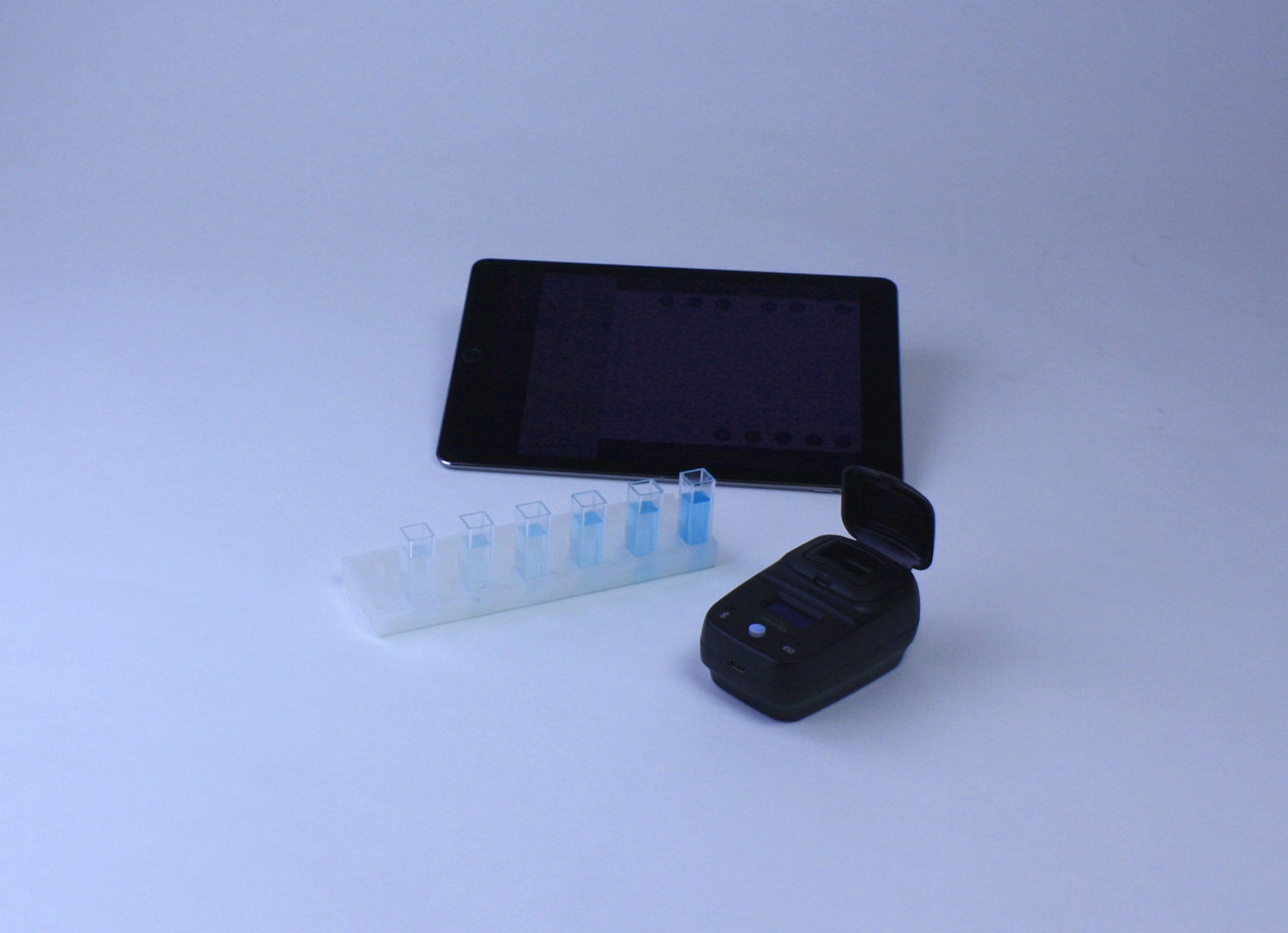Principle
There is a correlation between the absorption of monochromatic light radiated through a liquid sample and the concentration of the sample. This relationship is represented by Lambert-Beer's law. In this experiment the correlation between absorption (or transmission) and concentration of the measured solution is investigated. The validity of Lambert-Beer's law is also proven.
Benefits
- Especially understandable and didactically prepared description of the experiment (reference to everyday life etc.) including protocol questions.
- Future-oriented teaching: Integration into digital science lessons with tablets or smartphones.
- Increased motivation of students by using the intuitive measureAPP.
- Increased media competence.
Learning objectives
- Lambert-Beer´s Law
- Principle of photometry
Tasks
The students prepare a copper sulfate stock solution with known concentration. Using the copper sulfate stock solution, different (diluted) copper sulfate solutions are prepared and the relationship between concentration and absorption is investigated. Afterwards the concentration of another copper sulfate solution is to be determined.
Learning Objectives
This experiment serves to introduce the Lambert-Beer law and shows the connections between absorption and concentration. Quantitative analyses using photometry can be performed using the same principle for other colored solutions. Many colorless compounds such as phosphate or iron ions can also be determined photometrically after chemical conversion into colored complex compounds.

